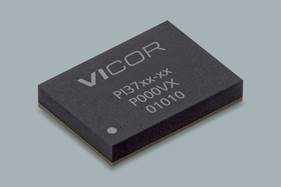THD(Total Harmonic Distortion)是什么?
THD stands for "Total Harmonic Distortion".
Harmonic Distortion is a means for measuring Nonlinear Distortion . Nonlinear Distortion is a form of signal processing error that creates signals at frequencies that are not necessarily present in the input. It contrasts with Linear Distortion, which is a form of error that creates no new frequencies beyond those that are present in the input signal. Linear Distortion changes the relationship of the size and timing of the frequencies that compose the input signal. Linear and Nonlinear distortion are directly based on frequencies present in the input signal. Noise is a form of error that is not as directly related to the input signal.
THD is determined by measuring the size of each of the new frequencies that are created by the source of the distortion. The new frequencies are called "harmonics" because they exist at frequencies that are integer multiples of the input signal. For example, the harmonics of 1 kHz are at 2 kHz, 3 kHz, 4kHz, and so on.
Even numbered harmonics are called "Even Order Distortion" and are caused by errors that are not symmetrical. The odd numbered harmonics are called "Odd Order Distortion" and are caused by symmetrical errors. Push-pull or balanced circiuts are symmetrical and therefore reduce Even Order Distortion.
Samples of pure sound and distorted sound, simulated by MIDI, can be heard by clicking here.

In the phrase "Total Harmonic Distortion", the word "Total" refers to the fact that the number shown represents the total of all harmonics. This total is a geometric total, formed by taking the square root of the sum of the squares of the amplitude of each of the harmonics. Therefore if the amplitude of the second harmonic is 4 and the amplitude of the third harmonic is 4, then their geometric total is 5.66 (the square root of 32).
THD+N is a variation of THD that includes Noise as well as harmonics.

From: J. Robert Stuart (Meridian Audio), Digital Audio for the Future, Audio, 3/98 pp 30-37.
A harmonic''s audiblity depends on the frequency and amplitude of the fundamental, as well as the percentage of distortion. The ear is more sensitive to harmonics of fundamentals at medium frequencies (1-2 kHz) and medium levels (80 dB). In the plot shown just above, a second harmonic smaller or equal to a given percentage is audible if it is inside the corresponding contour curve of constant distortion (i.e., 0.1%)
THD typically requires measuring harmonics that are at higher frequencies than the test signal. If the test signal is at a high frequency, then many harmonics may be filtered out, later on in the process of handling the signal. This leads to misleadingly low estimates of nonlinearity. However, nonlinear distortion produces other erroronious signals, besides harmonics; and they also reduce signal quality. Non-harmonic ooutputs due to nonlinear distortion are called "beats", Intermodulation, or IM..
THD is not the only means for measuring Nonlinear Distortion. IM is an alternative means for doing this. Historically, IM has been more difficult to measure, but modern FFT''s and digital signal generators make measuring IM very feasible.
IM has the advantage of not requiring the measurment of harmonics that are at frequencies that are many multiples of the frequency of the input signal.. Therefore, IM is good for measuring nonlinearity at high frequencies. One disadvantage of IM is that it is harder to determine whether the errors it portrays are symmetrical or not.





